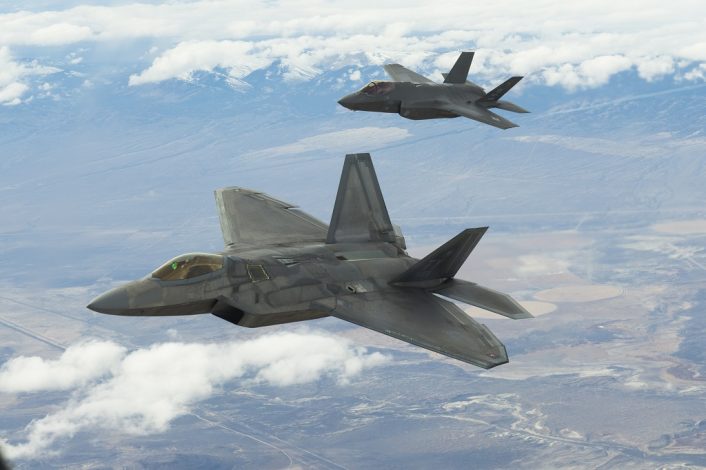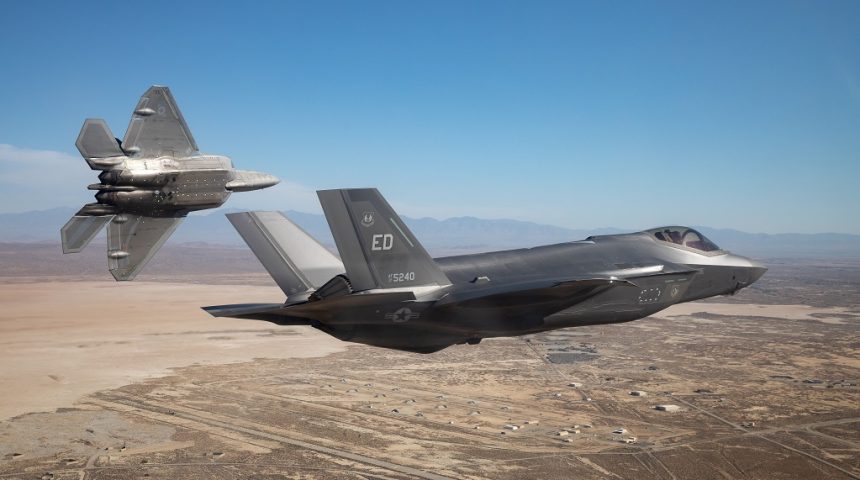The ability to use common software has implications in the ability to field new capabilities quickly and efficiently across the 5th generation fighter fleet.
The U.S. Air Force successfully tested on the F-35 Lightning II software applications that were developed for the F-22 Raptor, demonstrating for the first time the ability to use the same tactical software applications on both stealth fighters. The same applications were updated by software developers at Hill AFB in Utah and flown at Edwards AFB in California less than 24 hours later.
These F-35 flights, performed by the 461st Flight Test Squadron, were the latest successes of an innovation project, dubbed Project FOX, developed by a team of Edwards test pilots, software developers from the 309th Software Engineering Group and the Air Combat Command Federal Laboratory. This project has now accomplished three key advancements that team members call game-changers for the future of the stealth fighter fleet, and potentially all Department of Defense aircraft.
These innovations are the ability to use the same software across different military aircraft; the ability to source that software from a diverse set of suppliers including software industry leaders and government labs; and the ability to update that software in less than a day, 30-60 times faster than previously possible. Together these improvements are poised to deliver cutting-edge technology to the stealth fighter fleet at a fraction of the current time and cost, according to the press release.
Usually, the software upgrades on military aircraft are performed only by the OEM manufacturer, with limited ability to integrate software from external vendors. The 5th gen aircraft, because of their nature, required a unique development and testing process, limiting front-line aircraft to annual software updates regardless of operational developments, requirements and new technologies available.
The project team aims to change this limitation, developing and implementing a government-owned and -controlled “app store” for the F-22 and F-35. This was accomplished by combining government-owned software architecture with advanced processing onboard these aircraft and setting up a government software space for new tactical software.
“The ability to use common software across the F-35 and F-22 is going to dramatically change how we bring capabilities to the front line,” said Lt. Col. Raven LeClair, project co-founder and F-35 test pilot. “Now instead of having to define, purchase, test and field a software capability on each aircraft individually, we can gain a lot of efficiencies by developing a capability once and fielding it on all 5th gen fighters, saving hundreds of millions of dollars, if not more, in development costs and saving years in development time.”

This project will make it easier for the military to gather the best contributions from government, industry and academia. The main difference will be that, instead of developing multiple different software variants and having to test them on both aircraft separately, single variant of the code can be developed and integrated on both the F-22 and F-35.
“They [aircraft’s manufacturer] produce a fantastic product but being able to add to that baseline with capabilities created by software leaders in fields like AI/autonomy and cybersecurity will be transformative,” said Maj. Allen Black, project co-founder and F-22 test pilot. “This has the added benefit of increasing the number of companies and personnel working to modernize and enhance our combat aircraft fleet, resulting in higher throughput and faster progress modernizing our aircraft”.
The need to rapidly get new capabilities and field them to the front line so the military can maintain its edge is one of the most vital identified by the National Defense Strategy. Being able to do so in less than 24 hours, like it was demonstrated during these tests, can make a huge difference in a rapidly evolving battlespace.
“It is vital that we are able to rapidly develop and deliver capability, because the best software in the world won’t make a difference if it’s late to the fight,” said Maj. Cameron Jones, F-22 test pilot and part of the founding team. “This project allows us to load new software and update existing software separate from the safety of flight systems of the aircraft so we can make changes in a matter of hours instead of months. This capability means that developers will be able to make quick changes based off pilot feedback, dramatically shortening the time to get a fieldable product.”
Being able to quickly update software before a new flight mission is something the US Air Force is testing on various fronts, including Electronic Warfare systems. In fact, in order to improve the survival rate of the aircraft, the software needs to be up to date to the rapidly changing threat scenarios and intelligence. The new technology will also allow to integrate top notch software protection to help secure these aircraft from cyberattacks.
“This project helps to set the foundation required for agile combat employment,” said Marine Corps Maj. Kyle McLeod, the project’s lead F-35 test pilot. “We need to be able to rapidly adapt and update our weapon systems based on emerging intel or changing conditions while executing distributed operations. We demonstrated just that with this test. We flew a set of applications at Edwards, updated the simulated threat dataset in the software from the development location at Hill AFB and re-flew the software in less than 24 hours.”









